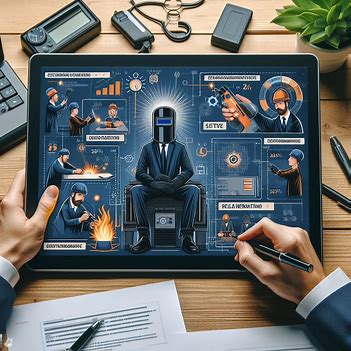Effective Email Communication and Etiquette for Professionals
In today’s fast-paced digital world, email has become a vital tool for communication, particularly for professionals. Whether you are reaching out to a potential employer, a colleague, or a client, mastering the art of effective email communication and etiquette is essential. Here are some valuable tips to help you navigate professional email interactions smoothly:
1. Use a Professional Email Address
When creating an email address for professional purposes, opt for one that uses your name or reflects your profession. Avoid using email addresses that are too casual or inappropriate, as they can create a negative impression before your email is even opened.
2. Write Clear and Concise Subject Lines
The subject line is the first thing the recipient sees, so make sure it accurately reflects the content of your email. Keep it brief but informative to increase the chances of your email being opened and prioritized.
3. Start with a Polite Greeting
Begin your email with a polite and professional greeting, such as “Dear [Recipient’s Name].” If you are unsure about their preferred title or name, use a general greeting like “Dear Sir/Madam” or “Hello.”
4. Keep it Brief and to the Point
Avoid long, rambling emails by being concise and clear in your communication. Use short paragraphs and bullet points where appropriate to make your message easy to read and understand. Stick to the main topic and avoid including unrelated or unnecessary information.
5. Use Proper Grammar and Spell Check
Using correct spelling, grammar, and punctuation is crucial for maintaining a professional image. Always proofread your emails before sending them to ensure errors are minimal. Use spell check tools and consider writing your email in a word processor first, where you can benefit from additional grammar suggestions.
6. Be Respectful and Courteous
Always maintain a respectful tone in your emails. Avoid using all caps, excessive exclamation points, or any language that may come across as rude or confrontational. Remember to be polite and considerate in your language, even during difficult or challenging conversations.
7. Respond Promptly
Aim to respond to emails in a timely manner, ideally within 24-48 hours. Leaving emails unanswered for too long can give the impression that you are unresponsive or not interested. If you anticipate a delayed response, such as during busy periods, inform the sender in advance.
8. Use a Professional Email Signature
An email signature provides important contact information and adds a professional touch to your emails. Include your full name, job title, company name, phone number, and LinkedIn profile if applicable. Keep the signature simple and uncluttered.
9. Avoid Forwarding and Replying to Irrelevant Emails
Be selective when forwarding or replying to emails. Avoid including recipients who don’t need to be involved in the conversation, as it can clutter their inbox and waste their time. Instead, consider summarizing the important points or directing them to relevant resources.
10. Proofread Before Hitting Send
Always take a moment to review your email before clicking the send button. Check for any mistakes or omissions and ensure the content and tone align with your intended message. It’s better to spend a few extra minutes proofreading than to send an email that may be misunderstood or contain errors.
Mastering email communication and etiquette is essential for professionals in today’s digital age. By following these tips, you can ensure that your emails are effective, professional, and leave a positive impression on your recipients.
Remember, emails are a reflection of your professionalism and can contribute significantly to your success in various professional interactions and endeavors.
